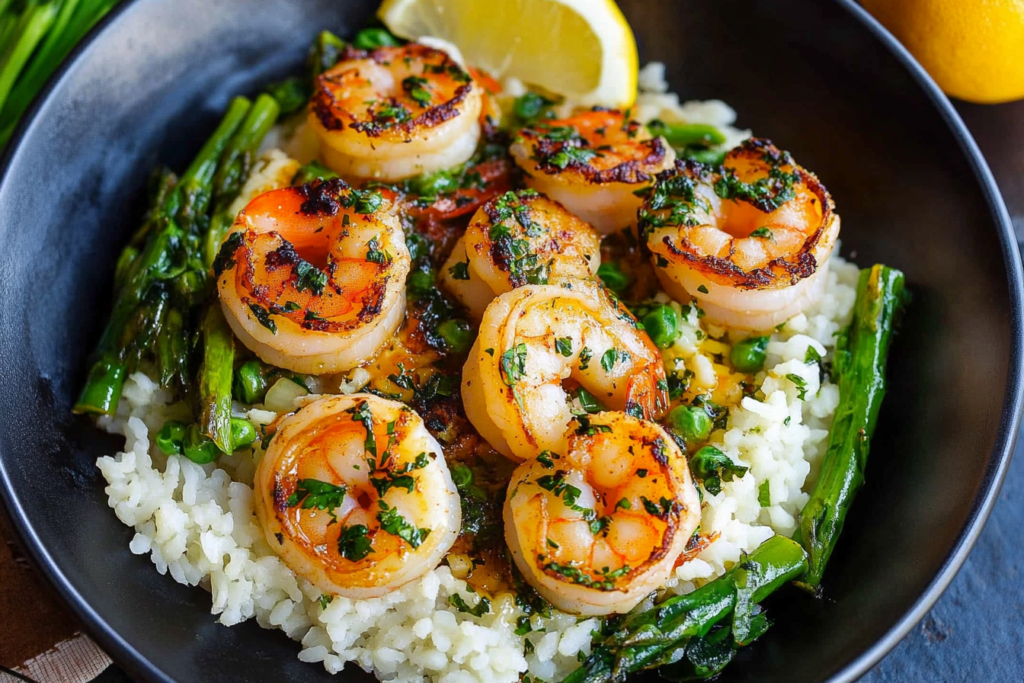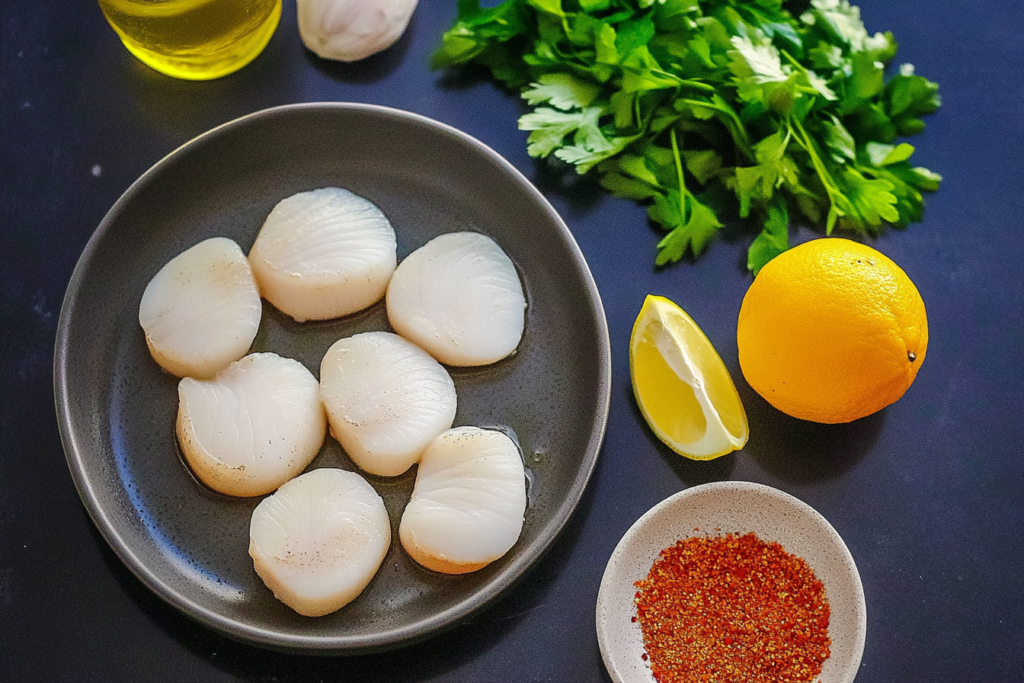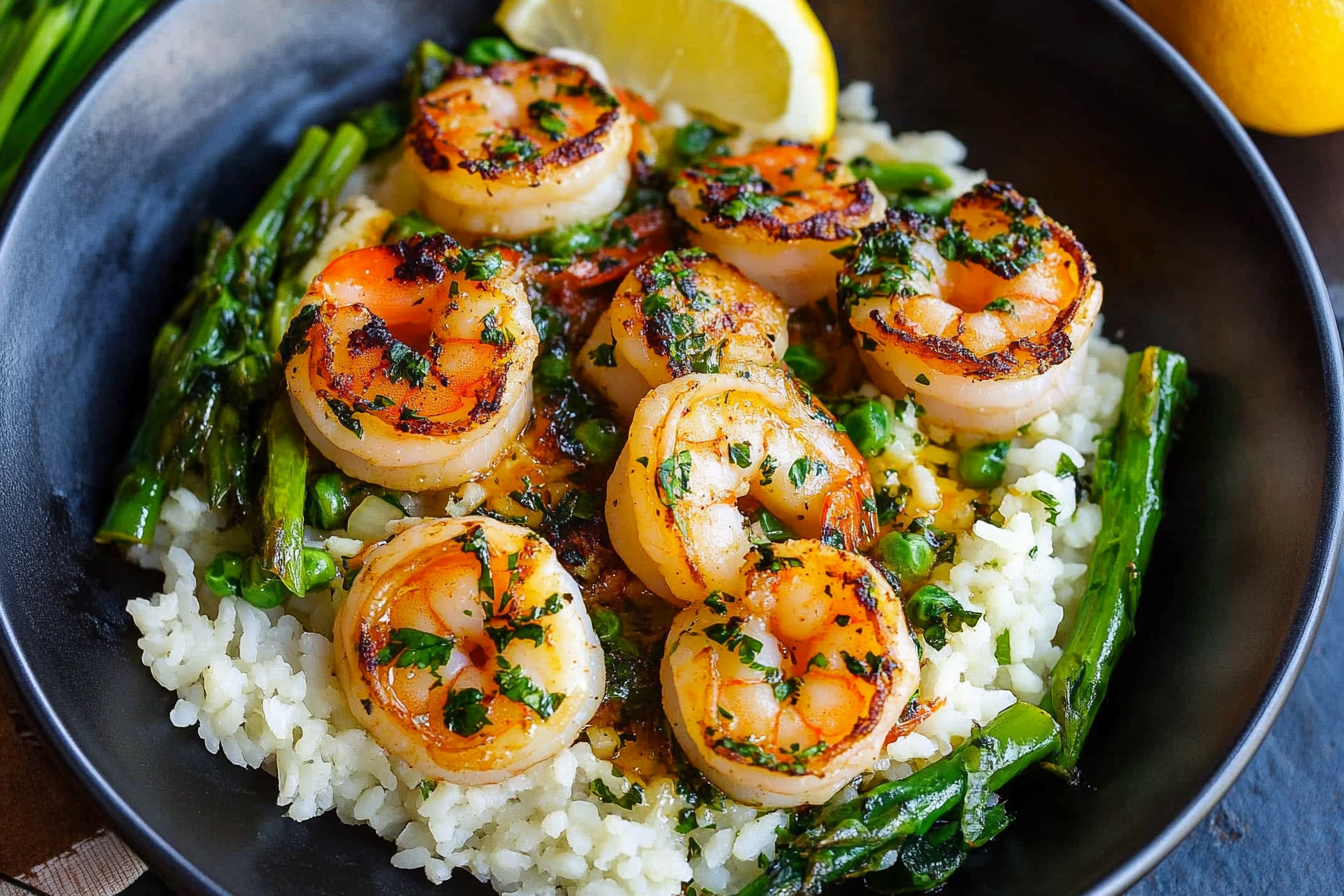A Coastal Culinary Delight
There’s something magical about the combination of shrimp and scallops that evokes memories of seaside dining and gourmet experiences. These two seafood treasures, when prepared together, create a harmony of flavors and textures that few other dishes can match. A well-executed shrimp scallop recipe brings together the sweet, tender bite of scallops with the slightly firmer, distinctive taste of shrimp, resulting in a dish that’s both elegant and satisfying.

Whether you’re planning a romantic dinner, entertaining guests, or simply treating yourself to something special, this shrimp scallop recipe offers versatility and impressive results without requiring professional culinary skills. From quick weeknight preparations to elaborate weekend feasts, this combination adapts beautifully to various cooking styles and flavor profiles.
What is a Shrimp Scallop Recipe?
A shrimp scallop recipe typically refers to a dish where these two seafood ingredients are the stars of the show, often prepared together to create a cohesive meal. Originating from coastal cuisines around the world, these recipes have evolved to incorporate diverse cultural influences while maintaining the integrity of the delicate seafood flavors.
Unlike single-seafood dishes, combining shrimp and scallops creates a more complex flavor profile and textural experience. While similar to other mixed seafood dishes like cioppino or paella, a dedicated shrimp scallop recipe focuses specifically on highlighting these two ingredients rather than creating a medley of many seafood varieties.
From a nutritional perspective, this combination offers impressive benefits. Both shrimp and scallops are excellent sources of lean protein, contain heart-healthy omega-3 fatty acids, and provide essential minerals including selenium and zinc. Scallops are particularly rich in vitamin B12 and magnesium, while shrimp offer significant amounts of iodine and astaxanthin, a powerful antioxidant. Together, they create a meal that’s as nutritious as it is delicious.
Ingredients: The Essentials for Flavor
For the Seafood Base:
- 1 pound (450g) large shrimp, peeled and deveined, tails optional
- 1 pound (450g) sea scallops, side muscle removed
- 3 tablespoons olive oil, divided
- 4 cloves garlic, minced
- 1 medium shallot, finely diced
- 2 tablespoons unsalted butter
- 1/4 cup dry white wine (Sauvignon Blanc or Pinot Grigio work well)
- Juice of 1 lemon
- 1/4 cup fresh parsley, chopped
- 1 tablespoon fresh thyme leaves
- Salt and freshly ground black pepper to taste
- 1/4 teaspoon red pepper flakes (optional)

Each ingredient plays a crucial role in creating the perfect flavor profile. The olive oil and butter create a rich base, while garlic and shallots add aromatic depth. White wine and lemon juice provide acidity that brightens the dish and helps tenderize the seafood. Fresh herbs bring complexity and freshness to balance the richness.
For those with dietary restrictions, the butter can be replaced with additional olive oil for a dairy-free version. The white wine can be substituted with seafood stock or even a splash of white grape juice with a touch of vinegar for an alcohol-free alternative. Those watching sodium intake can reduce salt and enhance flavor with additional herbs instead.
Step-by-Step Instructions:
- Prepare the seafood: Pat the shrimp and scallops dry with paper towels. This is crucial for achieving a nice sear rather than steaming them. Season both with salt and pepper.
- Heat the pan: In a large skillet, heat 2 tablespoons of olive oil over medium-high heat until shimmering but not smoking. A stainless steel or cast-iron pan will give the best results for searing.
- Cook the scallops: Place the scallops in the pan, ensuring they’re not touching each other. Sear for 2-3 minutes on the first side until a golden-brown crust forms. Flip once and cook for another 1-2 minutes until just opaque throughout. Remove from pan and set aside.
- Cook the shrimp: In the same pan, add the remaining tablespoon of olive oil if needed. Add shrimp in a single layer and cook for 1-2 minutes per side until pink and opaque. Remove and set aside with the scallops.
- Create the sauce: Reduce heat to medium and add the butter to the pan. Once melted, add shallots and sauté for 1 minute until translucent. Add garlic and red pepper flakes (if using) and cook for another 30 seconds until fragrant.
- Deglaze and reduce: Pour in the white wine, scraping up any browned bits from the bottom of the pan (these contain tremendous flavor). Let the wine reduce by half, about 2-3 minutes.
- Finish the dish: Return the shrimp and scallops to the pan. Add lemon juice and herbs, tossing gently to coat everything in the sauce. Heat just until warmed through, about 1 minute. Taste and adjust seasoning if necessary.
- Serve immediately: Seafood continues cooking from residual heat, so serve right away to prevent overcooking.
If you notice your seafood releasing too much liquid during cooking, your pan probably wasn’t hot enough initially. For the best sear, ensure your seafood is very dry before adding it to the hot pan. If your scallops or shrimp stick to the pan, resist the urge to force them—they’ll release naturally once properly seared.
Tips and Variations: Personalizing Your Dish
Flavor Enhancements:
- Add 2 tablespoons of capers for a Mediterranean twist
- Incorporate 1/4 cup of sun-dried tomatoes for a touch of sweetness and umami
- Stir in 2 tablespoons of pesto at the end for an herbaceous dimension
- Include 1/4 cup of heavy cream to create a richer sauce
- Finish with a sprinkle of toasted pine nuts for texture contrast
Dietary Modifications:
- For a gluten-free version, ensure your wine is certified gluten-free and serve with rice or gluten-free pasta
- Create a low-carb meal by serving over cauliflower rice or zucchini noodles
- For a dairy-free option, replace butter with ghee or additional olive oil
- Boost vegetable content by adding spinach, cherry tomatoes, or asparagus in the final cooking stages
Time-Saving Techniques:
- Purchase already peeled and deveined shrimp
- Prep all ingredients before starting to cook (mise en place)
- Make the sauce base ahead of time and reheat before adding the seafood
- Use a microplane grater for garlic instead of mincing to save time
Serving Suggestions: Complementing Your Seafood
This shrimp scallop recipe can be served in various ways depending on the occasion and your preferences:
- Classic accompaniments: Serve over linguine or angel hair pasta tossed with a little olive oil and garlic
- Lighter options: Pair with a simple risotto or fluffy quinoa to absorb the delicious sauce
- Low-carb choices: Present alongside roasted asparagus and a fresh salad
- Bread companion: A crusty baguette or garlic bread makes the perfect vehicle for soaking up the flavorful sauce
For beverages, this dish pairs beautifully with the same dry white wine used in cooking, such as Sauvignon Blanc or an unoaked Chardonnay. And for non-alcoholic options, sparkling water with a squeeze of lemon complements the flavors without overwhelming them.
For presentation that wows, serve in shallow bowls to contain the sauce. Arrange the seafood in the center, drizzle sauce over the top, and garnish with additional fresh herbs and lemon wedges. A sprinkle of high-quality flaky sea salt just before serving adds both visual appeal and a pleasant textural contrast.
FAQs: Addressing Common Queries
Q: Can I use frozen shrimp and scallops?
A: Yes, but thaw them completely in the refrigerator and pat very dry before cooking. Fresh seafood will provide the best flavor and texture, but high-quality frozen options work well too.
Q: How do I know when scallops are properly cooked?
A: Perfectly cooked scallops should be slightly firm to the touch but still tender, with an opaque appearance throughout. They should have a golden-brown crust on the outside. Overcooked scallops become rubbery.
Q: Can I make this dish ahead of time?
A: This dish is best enjoyed immediately after cooking. However, you can prep all ingredients ahead of time. If necessary, reheat very gently on low heat with a splash of water to prevent the seafood from overcooking.
Q: What can I substitute for white wine?
A: Seafood or vegetable stock works well, possibly with a splash of white wine vinegar or lemon juice for acidity. For non-alcoholic options, use stock with a tablespoon of lemon juice.
Q: How do I prevent my seafood from becoming rubbery?
A: Don’t overcook it. Both shrimp and scallops cook very quickly. Remove them from heat as soon as shrimp turn pink and opaque and scallops lose their translucence.
Q: Can I use bay scallops instead of sea scallops?
A: Yes, but reduce their cooking time significantly as bay scallops are much smaller. They may cook in just 1-2 minutes total.
Q: How can I make this dish spicier?
A: Increase the red pepper flakes or add a finely diced jalapeño with the garlic. A dash of cayenne pepper or a drizzle of chili oil before serving also works well.
Looking for more seafood inspiration? Our Salmon Sushi Bake Recipe offers another delicious way to enjoy ocean flavors at home. This easy and delicious dish transforms traditional sushi ingredients into a warm, comforting casserole that’s perfect for entertaining or family dinners. It features the same high-quality seafood focus as our shrimp scallop recipe but takes your culinary adventure in a different direction with Japanese-inspired flavors. Check out our Sushi Bake Recipe with Salmon for a creative twist that’s becoming increasingly popular in home kitchens!
Conclusion: Encouraging Culinary Exploration
This shrimp scallop recipe offers a wonderful introduction to cooking seafood at home with restaurant-quality results. The combination of tender scallops and succulent shrimp creates a memorable meal that celebrates the natural flavors of these oceanic treasures. By mastering the simple techniques of properly searing seafood and creating a complementary sauce, you’ll add a versatile and impressive dish to your cooking repertoire.
Don’t be afraid to experiment with the flavor variations suggested or create your own unique twist based on your personal preferences. The fundamentals of this recipe provide a solid foundation for endless creativity. Whether you’re cooking for someone special or treating yourself to an elevated home-cooked meal, this shrimp scallop recipe delivers satisfaction and sophistication in equal measure.
We’d love to hear about your experience with this recipe! Try it at home and share your results, modifications, and serving suggestions in the comments below. Happy cooking!

